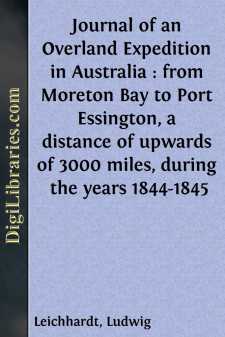Categories
- Antiques & Collectibles 13
- Architecture 36
- Art 48
- Bibles 22
- Biography & Autobiography 816
- Body, Mind & Spirit 145
- Business & Economics 28
- Children's Books 17
- Children's Fiction 14
- Computers 4
- Cooking 94
- Crafts & Hobbies 4
- Drama 346
- Education 58
- Family & Relationships 59
- Fiction 11834
- Foreign Language Study 3
- Games 19
- Gardening 17
- Health & Fitness 34
- History 1378
- House & Home 1
- Humor 147
- Juvenile Fiction 1873
- Juvenile Nonfiction 202
- Language Arts & Disciplines 89
- Law 16
- Literary Collections 686
- Literary Criticism 179
- Mathematics 13
- Medical 41
- Music 40
- Nature 179
- Non-Classifiable 1768
- Performing Arts 7
- Periodicals 1453
- Philosophy 66
- Photography 2
- Poetry 897
- Political Science 203
- Psychology 45
- Reference 154
- Religion 516
- Science 126
- Self-Help 85
- Social Science 82
- Sports & Recreation 34
- Study Aids 3
- Technology & Engineering 59
- Transportation 23
- Travel 463
- True Crime 29
Our website is made possible by displaying online advertisements to our visitors.
Please consider supporting us by disabling your ad blocker.
Journal of an Overland Expedition in Australia : from Moreton Bay to Port Essington, a distance of upwards of 3000 miles, during the years 1844-1845
Categories:
Description:
Excerpt
It was at the end of September, 1844, when we completed the necessary preparations for our journey, and left the station of Messrs. Campbell and Stephens, moving slowly towards the farthest point on which the white man has established himself. We passed the stations of Messrs. Hughs and Isaacs and of Mr. Coxen, and arrived on the 30th September, at Jimba, [It is almost always written Fimba, in the Journal; but I have corrected it to Jimba.--(ED.)] where we were to bid farewell to civilization.
These stations are established on creeks which come down from the western slopes of the Coast Range--here extending in a north and south direction--and meander through plains of more or less extent to join the Condamine River; which--also rising in the Coast Range, where the latter expands into the table-land of New England--sweeps round to the northward, and, flowing parallel to the Coast Range, receives the whole drainage from the country to the westward of the range. The Condamine forms, for a great distance, the separation of the sandstone country to the westward, from the rich basaltic plains to the eastward. These plains, so famous for the richness of their pasture, and for the excellency of the sheep and cattle depastured upon them, have become equally remarkable as the depositaries of the remains of extinct species of animals, several of which must have been of a gigantic size, being the Marsupial representatives of the Pachydermal order of other continents.
Mr. Isaacs' station is particularly rich in these fossil remains; and they have been likewise found in the beds and banks of Mr. Hodgson's and of Mr. Campbell's Creeks, and also of Oaky Creek. At Isaacs' Creek, they occur together with recent freshwater shells of species still living in the neighbouring ponds, and with marly and calcareous concretions; which induces me to suppose that these plains were covered with large sheets of water, fed probably by calcareous springs connected with the basaltic range, and that huge animals, fond of water, were living, either on the rich herbage surrounding these ponds or lakes, or browsing upon the leaves and branches of trees forming thick brushes on the slopes of the neighbouring hills. The rise of the country, which is very generally supposed to have taken place, was probably the cause of the disappearance of the water, and of the animals becoming extinct, when its necessary supply ceased to exist. Similar remains have been found in Wellington Valley, and in the Port Phillip District, where, probably, similar changes have taken place.
The elevation of Darling Downs--about 1800 to 2000 feet, according to the barometrical observations of Mr. Cunningham--renders the climate much cooler than its latitude would lead one to suppose; indeed, ice has frequently been found, during the calm clear nights of winter. During September and October, we observed at sunrise an almost perfect calm. About nine o'clock, light westerly winds set in, which increased towards noon, died away towards evening, and after sunset, were succeeded by light easterly breezes; thunder-storms rose from south and south-west, and passed over with a violent gust of wind and heavy showers of rain; frequently, in half an hour's time, the sky was entirely clear again; sometimes, however, the night and following day were cloudy.
The plains, as we passed, were covered with the most luxuriant grass and herbage. Plants of the leguminosae and compositae, were by far the most prevalent; the colour of the former, generally a showy red, that of the latter, a bright yellow....


